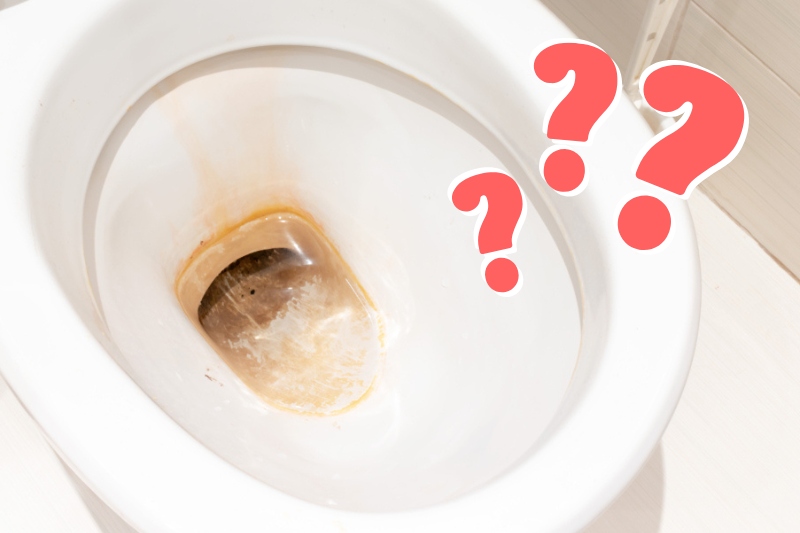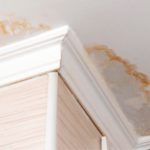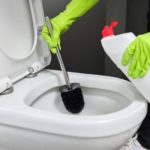For many people, the bathroom is the worst room in the house to clean. Although cleaning a shower or bath is never enjoyable, cleaning the toilet definitely takes first place when it comes to the most dreaded cleaning job.
Unfortunately, toilet bowls are notorious for housing germs and bacteria, making them one of the most critical parts of the bathroom to clean.
If it has been a while since your toilet was last cleaned, you’ve likely noticed a nasty brown stain forming in the bowl.
These stains are rather unsightly and something no one wants in their bathroom, but is it possible to get rid of them?
Luckily, the answer to this question is yes, and we know just how to do it!
Read on to learn how to get brown stains off the bottom of the toilet bowl so that it looks as good as new!
When it comes to the thick brown stains in your toilet, you will need an acidic or particularly abrasive cleaner to get the job done.
There are plenty of natural and commercial options out there, each of which we have gone into detail about below.
To achieve the best results with these cleaners, we recommend shutting off your main water valve and removing as much water from the toilet bowl as possible before starting. This allows your chosen cleaner to directly attack the stain rather than being watered down.
1. White Vinegar
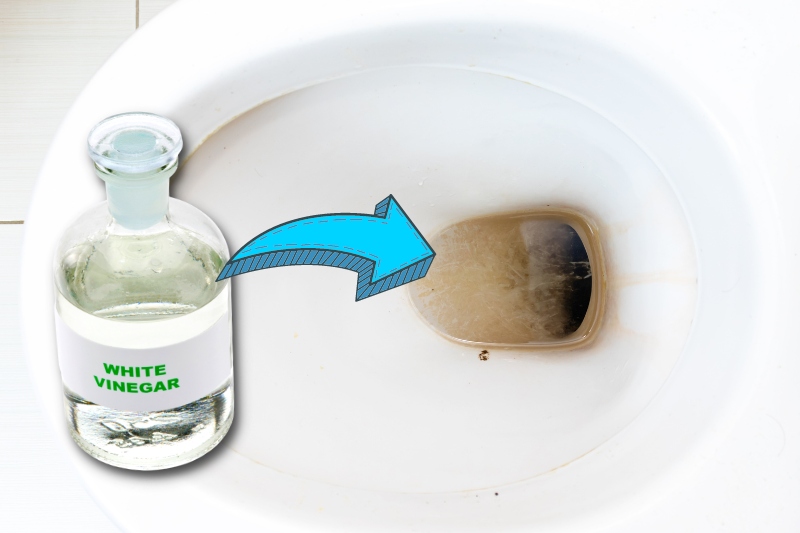
The first cleaner on our list is white vinegar. As we briefly mentioned above, acidic cleaners work very well on toilet stains, which makes vinegar a great choice, as it is high in acetic acid. To use, you need to:
- Pour one litre of white vinegar into the toilet bowl
- Let the cleaner sit overnight
- Scrub any remaining stains with your toilet brush
- Turn your water valve back on and flush the toilet
2. Bicarbonate of Soda
Bicarbonate of soda is the one natural cleaner on this list that doesn’t contain acid. This means it won’t work on really set-in stains, but its abrasive nature will be able to remove most of the brown marks.
Follow the below instructions for the best results:
- Add a few tablespoons of bicarbonate of soda to the toilet bowl
- Leave the cleaner to work for a few hours
- Scrub at the brown stains using your toilet brush
- Turn the water mains back on and flush the toilet
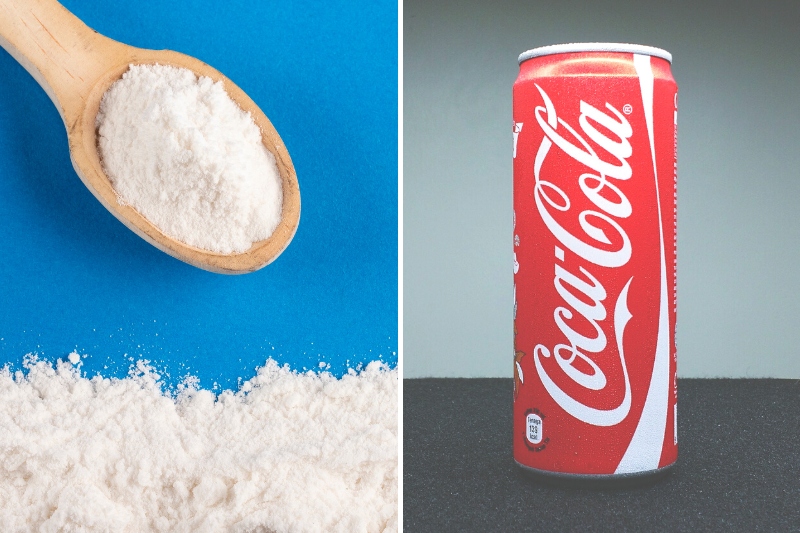
3. Bicarbonate of Soda and Coca-Cola
You may be surprised to learn this, but Coca-Cola is actually mildly acidic. Although it won’t be able to remove the stains from your toilet bowl on its own, combining it with the abrasive bicarbonate of soda creates a chemical reaction that will effectively remove the stains.
Don’t be surprised when the two ingredients foam up; this shows that the cleaner is working.
To clean your toilet with this combo, use the following steps:
- Add a few tablespoons of bicarbonate of soda into the toilet bowl
- Immediately after, pour a whole can of Coca-Cola into the toilet bowl
- Let the cleaner sit for a few hours
- Scrub any leftover stains with your toilet brush
- Turn your water back on and flush the toilet
4. Bicarbonate of Soda and White Vinegar
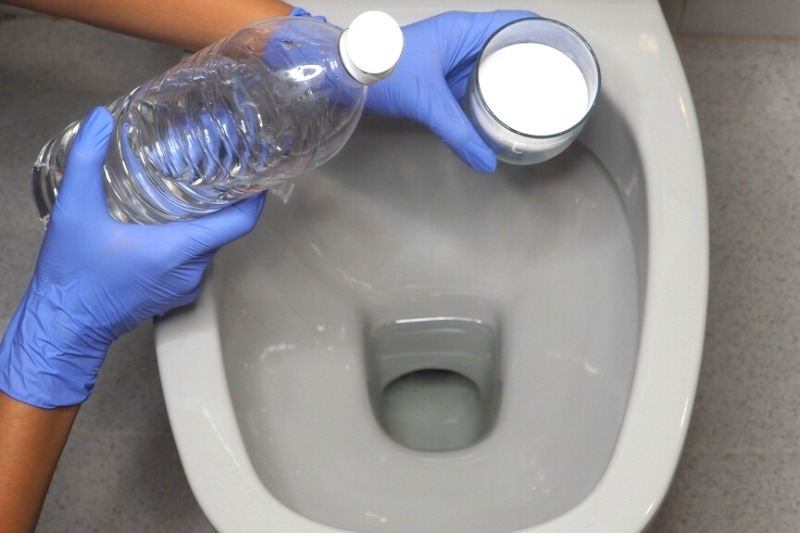
One of the most potent cleaning combinations is white vinegar and bicarbonate of soda. The acidity of the vinegar with the abrasiveness of the bicarb can be used to clean tons of things around the home, not just your toilet!
Be aware that this mixture also causes a chemical reaction, and the ingredients will start to bubble and fizz when mixed.
To use, simply do the following:
- Open your bathroom window to make sure the room is well ventilated
- Pour 250ml of white vinegar into the toilet bowl
- Add 200g of bicarbonate of soda, then pour over another 250ml of vinegar
- Let the cleaner sit for 5 minutes
- Scrub the remaining brown marks with your toilet brush
- Turn your water valve back on and flush the toilet
5. Lemon Juice
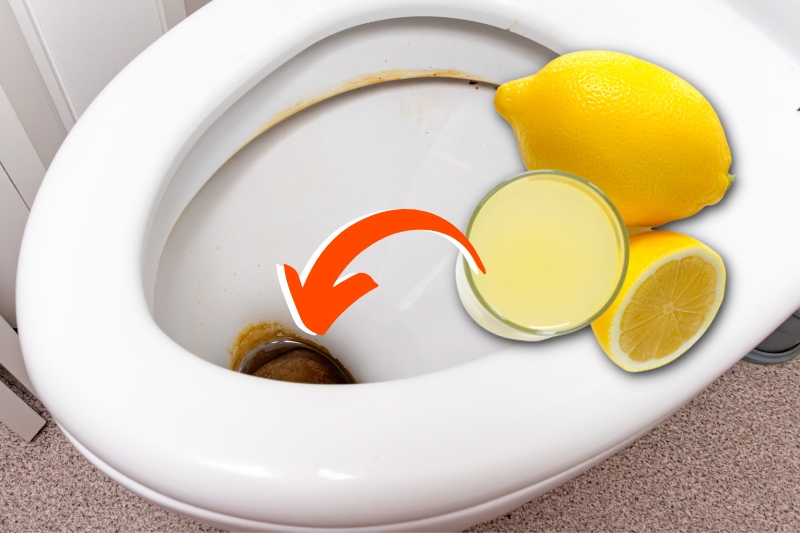
The last natural cleaner on our list is lemon juice, which uses citric acid to break down the brown marks.
This cleaner is slightly stronger than white vinegar, but the overall difference isn’t that noticeable. To effectively remove the stains from your toilet, you need to:
- Pour hot water into your toilet bowl, followed by at least 250ml of lemon juice
- Let the cleaner sit overnight
- Scrub at any remaining marks using your toilet brush
- Turn the water mains back on and flush the toilet
6. Commercial Cleaner

If none of our DIY toilet cleaners take your fancy, there is always the option of buying a commercial cleaner instead. For the best results, make sure to use your chosen cleaner according to the packet instructions.
One product that we recommend trying is the Domestos Zero Limescale Toilet Descaler. This toilet cleaner can be bought for just a few pounds and is said to give amazing results.
What Causes Brown Stains in the Bottom of the Toilet Bowl?
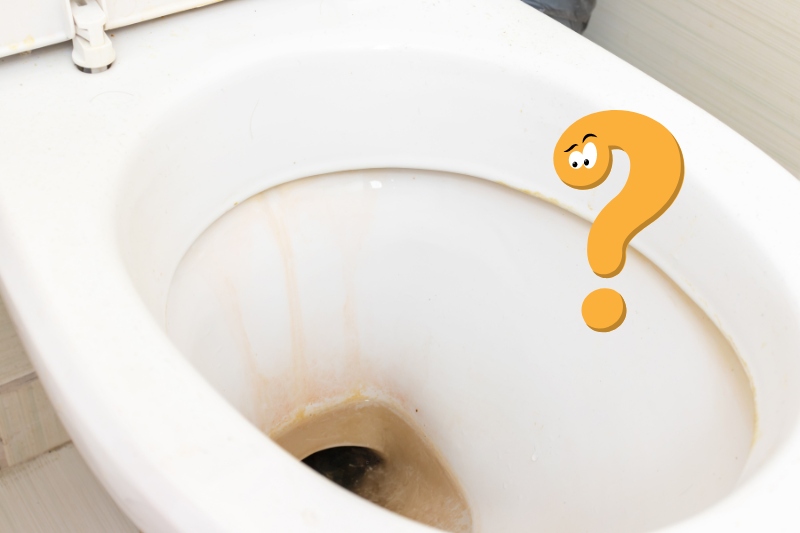
When brown stains appear in the toilet bowl, many people’s first thoughts are that it is poo. Fortunately, this is not the case! Instead, these unsightly brown stains are caused by minerals found in your water supply.
If you live in a hard water area, your water supply will contain minerals such as iron, manganese, and calcium. When a toilet isn’t cleaned regularly enough, these minerals leave behind deposits that slowly build up over time. These mineral deposits are otherwise known as limescale.
To begin with, the limescale build-up will not be noticeable as it will be white in colour and blend in with your toilet bowl. However, if left for long periods, these deposits will slowly go from white to grey, to green, before finally going brown.
To prevent these brown stains from appearing in your toilet bowl again in the future, you need to aim to clean your toilet at least once a week.
You can also invest in a water softener if you live in a particularly hard water area. This device will remove any minerals in your water supply, preventing limescale build-up.

Hannah has a passion for cleaning. She worked her way around Australia by cleaning hostels in exchange for free accommodation and used her cleaning skills to bag a job as a chalet host for a luxury ski company in France.
